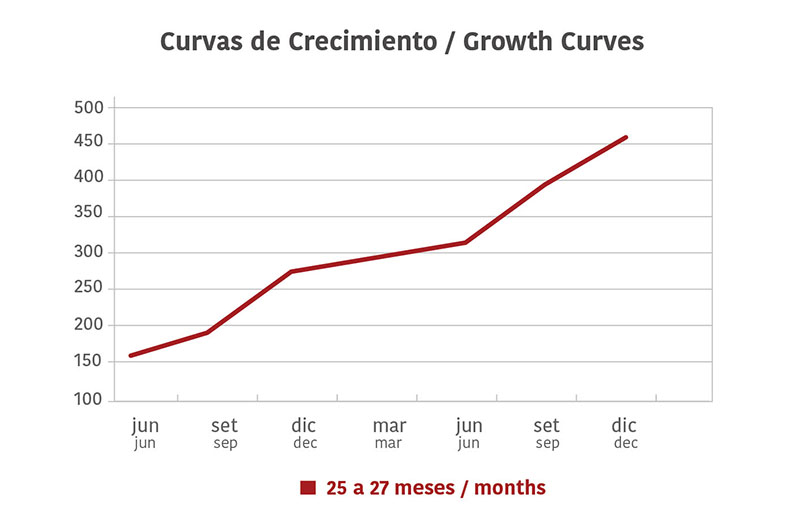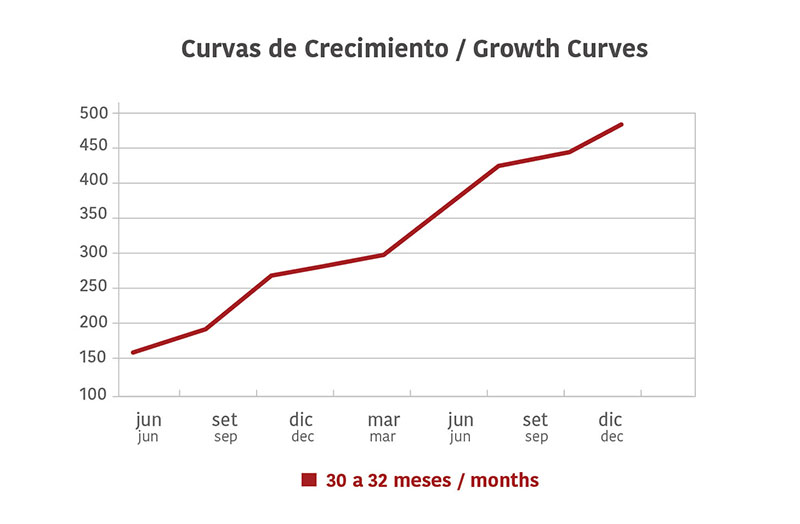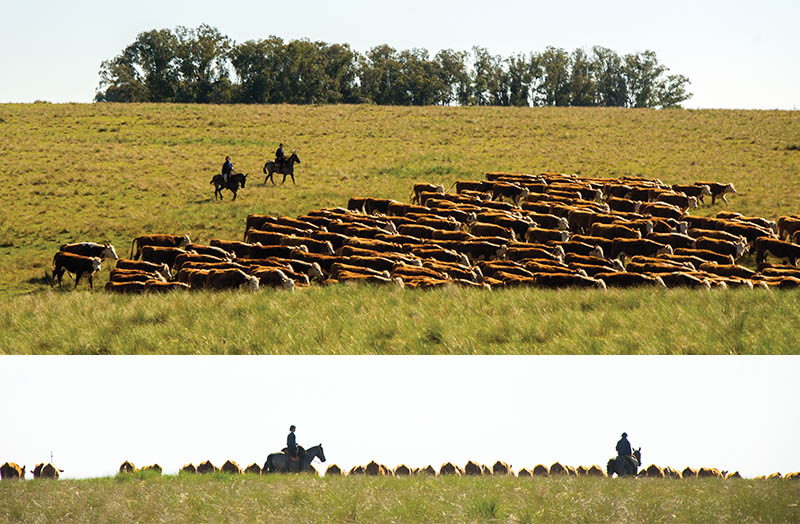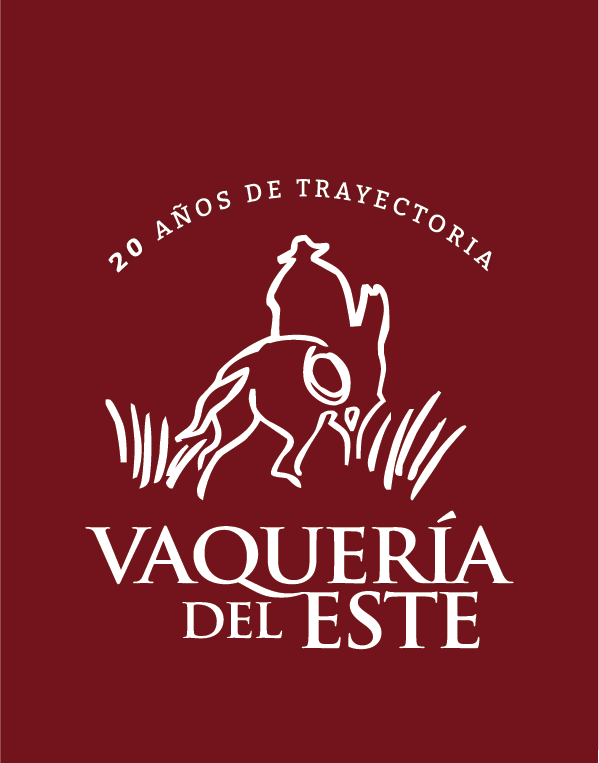Production processes
The majority of the cattle that our farmers submit to slaughter is bred cow-calf-rearingfinishing cycles (opened or closed), which represents a big advantage, because it enables to have a greater control over the productive process (certifications for instance) and, at the same time, avoid circumstantial fluctuations in the margins of finishing. During their term in the establishment, animals are bred in open sky, without stabling, having unrestricted access to water and with a suitable diet. Cattle is monitored with regular rounds. Docility is a sought trait that is attained with a smooth appropriate handling.



Rearing starts, between 6 and 10 months of age, with calves between 130 and 180 kilograms coming from our own cow-calf operations or from selected suppliers. All the animals are from British breeds or their crossbreeds. 90% of the steers sold by Vaquería del Este are young up to four teeth. To reach the required carcass’ weights at those ages, rearing is conducted since weaning, with feeding levels that enable changing but always positive daily gains. Average daily gains for the whole rearing term vary between 340 and 540 grams, according to the growth curves defined for each type of animal. To attain this kind of growth and selling plans, all animal lots are regularly weighed according standard procedures. The analysis of such records has allowed us to define growing type-curves for different steers.

Vaquería del Este has consistently increased the number of heads sold through our commercial agreements and believes on keep growing. Nowadays we market, approximately, 30.000 heads per year. The most important category are steers, 60% of total, followed by cows and heifers. Steers are sent to slaughter at early ages, a trait that we have been improving without diminishing carcass weights, as a result of productive efficiency. That determines excellent levels of tenderness, meat color, fat and suitable levels of pH and and meat yield.

Even though the majority of sold to slaughter cattle are from a free-range origin, which gives them nutritional traits that are specially valued by consumer (less intramuscular fat, larger proportion of unsaturated fat and omega 3 fat acids), in recent years some producers have developed grain fattening systems destined to high quality quota (HQB 481), managing, in that way, to incorporate the agricultural resources at hand and efficient integrated systems for those markets.

